The Ministry of Defence has set out plans to repurpose surplus Warrior infantry fighting vehicles into remotely or autonomously operated minefield-breaching platforms, under Project ATILLA.
According to a Prior Information Notice published on 21 August, “under Project ATTILA, the Authority are seeking to de-risk and accelerate future procurement of an attritable, modular, autonomous, heavy payload UG by exploiting current in-service vehicles within a time and cost bound contract. This contract seeks to procure and spirally develop an optionally crewed minefield breaching system based on WARRIOR, capable of being used in the UK and overseas by Royal Engineers.”
The Ministry stated that “the Authority requires an optionally crewed attritable minefield breaching capability that can be spirally developed to de-risk and accelerate future procurement of a modular, autonomous, heavy payload Uncrewed Ground Vehicle.”
The project is structured into two concurrent phases under a single contract.
- “Phase 1. Procurement of a Minimum Deployable (MDY) of up to six optionally crewed systems based on an in-service donor vehicle (WARRIOR) with Front End Equipment (FEE) for use as a Battlegroup (BG) minefield breaching capability.”
- “Phase 2. Development and iteration of MDC to move from remote to autonomous operation and refine requirements for future UGV procurement.”
Suppliers will face a strict entry test. The notice makes clear that “suppliers will be asked to confirm as part of their PSQ response that they are able to provide six optionally crewed minefield breaching systems able to generate a safe lane comparable to current in-service platforms (details to be provided as part of the PSQ). This section will be PASS/FAIL – suppliers who are unable to provide this capability in the timelines requested will be discounted from the competition.”
The contract is valued at £12 million and is set to run from January 2026 to March 2028, with an optional one-year extension at the MoD’s discretion.
Why Warrior?
The analysis behind Project ATILLA is straightforward. Warrior, once the backbone of the Army’s armoured infantry, is being retired from frontline service. That leaves the MoD with a stock of heavy tracked hulls that still have considerable mobility, armour, and payload capacity. Instead of scrapping them, the plan is to convert Warriors into optionally crewed uncrewed ground vehicles (UGVs).
The concept is to fit Warriors with front-end breaching equipment such as ploughs, rollers, or line charges. These would allow them to carve lanes through minefields, pushing through obstacles while either being operated conventionally with a crew or remotely controlled. Over time, as autonomy matures, the systems would move closer to fully uncrewed operation.
This approach provides several advantages:
- It avoids the long delays and high costs of designing a bespoke UGV from scratch.
- Warrior’s weight and protection make it survivable against mine detonations.
- The tracked chassis provides the necessary mobility to breach obstacles and rough terrain.
- By keeping the option for a crew, the vehicles can be fielded and tested before autonomous systems are fully mature.
Spiral development
Project ATILLA is designed as a “spiral development” programme: take an existing platform, adapt it to current needs, deploy a minimum capability, and then iterate. The six vehicles planned for Phase 1 would form a Minimum Deployable Capability, giving the Royal Engineers a heavy, attritable tool for minefield breaching. At the same time, they would act as testbeds for doctrine, technology, and operations, helping to refine requirements for a future purpose-built UGV fleet.
By Phase 2, the focus would be on “development and iteration of MDC to move from remote to autonomous operation and refine requirements for future UGV procurement.” Lessons learned from the converted Warriors could then shape a new generation of modular, heavy UGVs designed from the ground up.
The broader context
The MoD’s wording is clear that this project addresses a pressing operational gap: the need for an “attritable” minefield breaching vehicle. Attritability implies that the vehicles are expected to operate in highly dangerous conditions where losses are likely. Making them optionally crewed means they can take risks without necessarily putting soldiers inside.
The approach reflects a broader shift in Western militaries toward uncrewed ground systems capable of tackling some of the most hazardous battlefield roles. In this case, Warriors converted under ATILLA would act as a bridge between traditional armoured engineering vehicles and the fully autonomous heavy UGVs the Army may seek in the 2030s.
In blunt terms, looking back at my headline, I truly believe “Warrior drones” is not inaccurate. Six retired infantry fighting vehicles could soon be fitted with ploughs and rollers, stripped of their turrets, and sent into minefields under remote or autonomous control. What begins as a stopgap could mark the start of a longer-term transformation in how the Army approaches combat engineering and high-risk battlefield tasks.
We also now know why they are not going to Ukraine.
As is standard in professional reporting practice: if you are from another outlet and intend to reference this coverage, please link back to our original article.


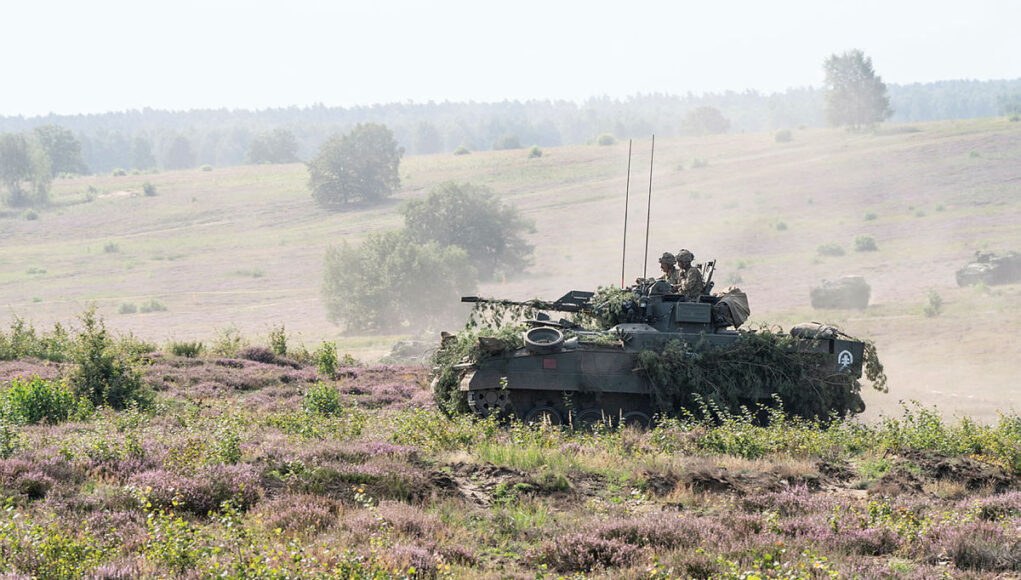
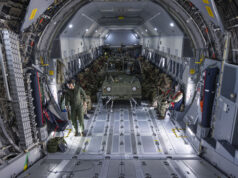



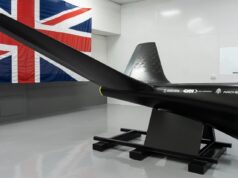
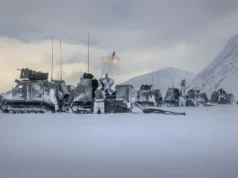

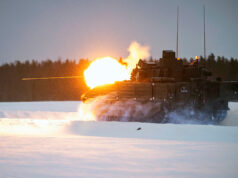

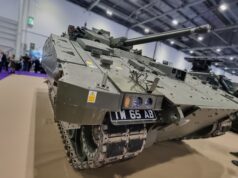

This is not my area of interest/expertise, but it seems like a good idea. AFAIK, the Warriors had been set to be retired fairly soon. This looks like an useful way of retaining them.
This idea will require an extra troop in any Squadron they are deployed in, an armoured or field SQN will not have the manpower to spare to look after the extra vehicles involved!
Seems a fair enough plan though mate, if that can be organised?
Yes it is a good ‘plan’,all I’m saying is if you want to increase a Sqns TOE it will involve opening that magical box of soldiers to crew and maintain them! There are robotic mine clearing vehicles in use all over including Ukraine,do we really want to use vehicles that may well be needed for their original purpose?
I’d have preferred that WCSP was continued, restarted, or the Warriors kept as is or put in reserve.
But we know MoD don’t do that.
As someone else observed, only 6. So probably another trial that goes nowhere.
*As someone else obsered, only 6*.
Yup, That’s what I went on to read in the depths of the article after seing misconceptions about the quantities involved, being discussed here.
A typical result of a not very acurately headlined article.
The other 740 (or what ever the number might be) are not being used as mine clearance vehicles, nor are all six being trialled, being crewless.
“Words” easily mislead.
We managed it when they did the same thing with Snatch. Nothing is insurmountable- any uplift of equipment comes with a bill, but also an uplift in capacity.
Still give them to Ukraine and they will have them built faster 😉🤣
Everything can be used to de-mine something once.
Perfect, hit a mine, U/S get another in for the next mine…. Seems bloody stupid to me… Why not just keep them in storage.. You never know what’s gonna happen tomorrow .
Give them to the Home Guard; we are going to need them all.
Lee, it is not stupid to have a substantial number of mine clearing assets.
Six……..
Good lord some common sense at last..!
We used to have 750 Warriors this doesn’t sound like a requirement for all of the remaining vehicles. So I wonder if they have any other common sense ideas for some of the rest of the Warrior fleet? Otherwise why not send at least some to Ukraine 2 or 300 hundred would still be very useful against Russia? So hopefully they have more ideas in the pipeline for these vehicles.
Cheers CR
I’m surprised they weren’t all decommissioned because that is what we do….
Given how many UK has I’m also suprised that a CH3 style spiral isn’t proposed.
Maybe the idea is to turn them all into optionally crewed vehicles – operated by mythical AI soldiers….oh wait…..the market has realised that AI is very fallible…
Hi SB,
The article does quote that the system is a, “crewed attritable minefield breaching capability that can be spirally developed”.
I would agree with the fallibility of AI. It has apparently made huge leaps in a few very short years but I think that is largely a missapprehension as in reality I think what has happened is that AI has eventually achieved a level of maturity that has allowed it to be deployed as an add on to existing search engines. Once that level was achieved and initial deployments proved sufficiently successful it has been put to wider search / data mining uses, which is after all where it’s strength is supposed to lie. I would also say that part of the ‘success’ of the initial roll out is down to the caveats placed on the results, assuming folk take note of said caveats.
I have real doubts about the maturity of AI when it comes to carrying out more complex tasks such as making engagement decisions or indeed station keeping tasks especially in aircraft applications. AI on our roads has had a lot of publicity but I do wonder how much of that is down to investor pushing for a return on investment and politicians desperate to keep up with competitors. I also wonder if the rules of the road might be helpful to put limits or boundaries round the challenges facing the AI. Battlefield application have far fewer ‘rules’.
So for the time being I think a human operator in the loop is necessary for most applications that we can dream up. So I can envisage a tank crew commanding say a couple of drones that use an AI enabled station keeping system with weapons being controlled from the command tank and sensor data being fed to the command tank as well. Data management within the command tank would be a significant challenge but I think that gaming could help here as many people are used to gaming information presentation and ‘character / drone’ control interfaces.
Having said all of that there is a very good article on Navy Lookout highlighting that a major reason for the slow up take of AI systems and platforms is that there is a lack of infrastructure to store, maintain and prepare the systems for deployment. In the case of the RN PODS concept they ran out of car park space to store any more containers – allegedly! So seems that the technology might not be the main reason to the slow up take, especially if the procurement, doctrine development and training systems cannot react quickly enough to the changing opportunities.
Cheers CR
Didn’t Digital Concepts Engineering demonstrate an unmanned Warrior a while back? I think the software included functionality to enable the Rarden to target and fire on the move.
We did, yes, for AWE18, successfully demonstrating an alternate use for out of service platforms which could have included CVRT and FV432 variants with the same control. The underlying technology has improved significantly since then, this revised concept should be highly capable.
So in real talk, UK is to repurpose 6 Warriors and then decide what to do with all the others.
No real big decision yet.
Giant oaks from little acorns grow!
Absolutely but this headline is deceiving to the masses. It’s just 6 that are being trialled/tested/converted not the whole lot.
Seeds only get to grow into trees if planted.
And it can only decieve the masses if it is in the Telegraph or the Mail and then repeated as nauseum by every other major news outlet as though it were real!!!
What I take away from this is that the army is working hard to make a virtue out of necessity; no bad thing. Maybe some sort of ‘lite’ WCSP might be on the cards.
I’m not taking anything away either, just adding clarity.
It’s 6 of over 700 Warriors we are talking about here. The Article says it later on but the Headline wording seems to be taken differently.
I tend to read the whole thing to avoid confusion.
In Ukraine the upgraded Bradly has been a great success. We have lots of Warriors who should have been upgraded to something like the Bradley spec and be the future of the armoured infantry. Instead the infantry are getting Boxer, a wheeled, high profile, under gunned infantry carrier and we are expending our Warriors by blowing them up in minefields. The absolute state of MOD procurement.
Blimey, yep, it seems somebody made a decision in the office🤔🤣 they must be in a state of shock!
Seems to have been a day of decision making, I hope that they’ve put the kettle on.
Without numbers for comparison it is impossible to know if this is a good ida or a bad one.
Warriors aren’t going anywhere if Putin gives the green light to peace monitoring in Ukraine. Unlikely as it is, the UK will need to retain Warrior, Bulldog and possibly CH2s beyond their planned OSD. The drone conversions will and should go ahead, but there aren’t enough new generation vehicles to take up duties in Ukraine for at least three – five years.
“if Putin gives the green light to peace monitoring in Ukraine”
I see you still believe in fairystories 😆
Never going to happen… 🌮
Unfortunately some people don’t understand poohtin goals do they.
Note, I said ‘IF’ and ‘Unlikely.’
This is a bit weird, isn’t it? The British Army planning to march through mine fields behind breaching vehicles? Sounds like WW1. I can imagine the enemy drone operators rubbing their hands in anticipation. Surely there’s a more 21st century solution to minefields. Like blanketing them with hundreds of dirt cheap suicide drones.
Think any drones used for this would prove more expensive – firstly, they would have to heavy enough to detonate a pressure mine, heavy means not cheap, secondly they wouldn’t be reuseable – hopefully the Warrior minesweepers would be.
James, of course you breach minefields if you wish to advance forces in a particular direction that is blocked by minefields. Not sure about marchng through the breach. Our guys have vehicles these days!
My point is that we still seem to be trying to clear minefields using WW1 and WW2 methods, ie vehicles with flails, with the enemy waiting on the other side with their artillery and drones. Isn’t that what Ukraine tried in their failed spring offensive?
Where’s the 21st century solution?
Well those are some of the tools yes. There are also things like MICLIC that’s can be used. Other than that what do you propose is used to clear minefields.
Yes Ukraine tried to do this: No that isn’t what stopped the Ukrainian offensive.
RUSI say that failing to de-mine was one of the causes.
As to what I propose, I don’t claim to know. I’m not a military man, just an interested bystander who realises this could become a very important issue soon. It seems to me we need some blue-sky thinking on the issue, and where better to get it than on UKDJ!
Not really. They didn’t fail to demine, they got through the initial minefields in plenty of places. What they struggled with was the depth of the Russian positions. They set up an attack, breached the fields, took the initial positions, but without air or artillery superiority, those attacks would be costly and disorganised after the initial attack, and then there’d be another minefield and another position, and the attack would have to stop so that the ZSU could reorganise it’s ground forces, bring forwards the mineclearing kits again, go through another planning cycle, and launch another attack, but this time without the benefit of surprise and with Russian reinforcements brought up.
The things that stopped the offensive weren’t the minefields, it was positions in depth, lack of operational and tactical surprise, and material superiority by the Russians.
I invited you to suggest some blue sky thinking and you’ve got nothing, so it seems a bit rich to complain that we are using tried and true mine clearing techniques that *work*.
The article also state that they can be used in the UK…. Sorry but do we have minefields??
Hi James,
One of the most successful ways to clear mines that the Ukrainians have found is to use dogs to literally sniff out the mines! The dog handler than marks the mine for a clearance specialist to deal with. Apparently the dogs get used quite close to the front line as well.
Using Warrior in the way described could be used has part of a suit of systems and capabilities. If successful you could imagine the Warriors opening up a number of axis through a minefield, supported by artillery (I guess we would need to borrow some from our allies!) allowing combat units to push through. The initial routes would need to be opened up pretty quickly using a mixture of capabilities, perhaps sniffer dogs to detect the mines that suicide drones follow up and explode the mine..!
As for 21st century solutions, various agencies are working on artificial ‘noses’ for detecting drugs for example but they’re not there as yet (basically nature is still best when it comes to smell!). So perhaps some day an artificial ‘nose’ mounted on an aerial drone could be used to detect and ‘mark’ mines while suicide and ‘bomber’ drones are used to explode the mines. Airborne ground penetrating radar might be another high tech part of the solution but that might be getting into the none attritable cost bracket so suicide or bomber drones would again to the order of the day. Other advanced optical sensors might have a role as well.
The big problem is how to use these systems and ideas together in a coherent and effective manner and it strikes me that the MOD’s / military focus is too much on the tech and not enough on how to get the best out of what is already available. Given the rate at which some technology is developing the military should focus far more on the rapid development concept of operations, doctrine and support solutions etc. rather than chasing and over specifying the technology because the techies are racing a head of the MOD’s ability to understand the tech..!
Cheers CR
Oh the irony, and why does it take MOD so long to exploit capabilities.
I left the Srmy in 2001, and as part of my last Jon at ATSA Chertsey, I remember going to Bovington to watch an FV423 fitted with a mine plough being remotely operated by a 2nd vehicle from about 30 meters behind d it.
Given the advances in electronic technology over the last 20 plus years this is a no brainier. Sadly DE&S don’t see this as new and exciting, so have not kept their eye on the ball.
Time to have a major review of what DE&S do along with a re look at bringing in Industry and SMEs to run the procurement process.
Let’s revisit GOCO (Government Owned, Commercially Operated)
I suspect it’s more of a question of priorities. Pretty much all equipment and training for conventional armoured warfare atrophied from 2004 ish. EVERYTHING went into COIN and then with Op ENTIRETY the whole force concentrated on Afghanistan in particular.
Basically- we didn’t need mine clearance for that so it wasn’t looked at.
If this is the best idea that the MOD can come up with for Warrior they need to have a serious look at themselves. Yes minefield breaching is likely required but how did they arrive at this solution and what did Army say were it’s requirements ( and why) and how does it fit into the Army oob and concept of operations?? Unless its come from a well thought out process ( and lets face it we’re talking MOD & Army here) this will just have come out of the latest thought bubble.
Personally I’d like to have seen Warriors refurbished and upgraded ( ok cheap and cheerful) for using as overwatch vehicles as defo a need for that given Boxers lack of firepower ( maybe combine with Ajax in a recce role ( carry dismounted teams and Javelin etc). At least worth an analysis of use and feasibility.
This has come from direct study of Ukraine and the heavy use of complex obstacles by likely enemy. We have very limited capability to do anything about it – so this is one answer to that requirement.
There are all sorts of things you COULD do with Warrior – this one meets an actual articulated requirement.
Yep seems the Russians like to build minefields and fortifications and exercise squatters rights as soon as they get boots on a piece of ground. Although you will in the end surround and isolate using mobile and deep strike, you still need to in the first instance breach the minefields and fortifications at some points to allow access.
Should be in a reserve fleet, stored and maintained in operational condition. Carve a path through a minefield Ukraine/Russia style? Then the column gets picked off by drones/arty.
Please edit your article to spell Attila correctly. It’s like nails on a blackboard for a lot of us. If you can’t be bothered with the basics of spelling and grammar we are unlikely to be interested in your opinions about military technology
It’s a typo, get a grip
We used to have perfectly good bit of kit Giant viper has this gone out of service surely the retired warriors should have a basic refurbishment and be put into war reserve stock in the guuci new sheds in ashchurch
David, you have an optimistic view as to what AFVs are in war reserve. It is relatively small numbers of current in-service equipment. Not equipment that has been formally declared Obsolete, withdrawn from service and replaced by something else. (BTW, Warrior is not yet in that category).
We have no Chieftains, CR1s, Saracen APCs or Ferret Scout Cars in war reserve!
I’m fully aware there are no cheifys etc in war reserve we have no artillery in reserve either
David, certain numbers of MLRS and 105mm LG will be in War Reserve.
Mlrs are going through the gmlrs improvement programme in the usa we bought norwegian and Japanese mlrs to make up numbers even the rsa gate guard has been put back into service. Light guns aren’t in a good place shortage of spares somtime not available for months the former as90 units were given guns from 104 regt because there aren’t enough spare